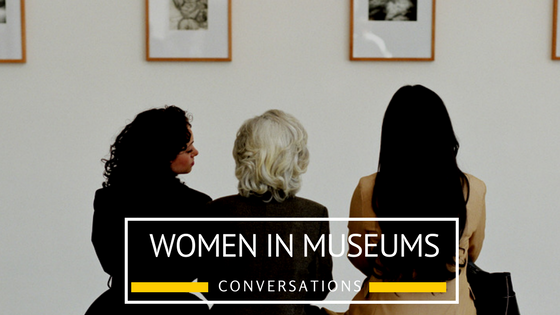
By Hillary Ryan, Communications and Programs Strategist at Western Museums Association
When looking at the issue of gender pay inequality in the museum field, we are exploring part of a larger challenge in our sector, as well as specifically within our field. To get a sense of the issue, let’s get some numbers.
Women today make the entire nonprofit sector function— or about three-quarters of it anyway. The majority (approximately 72%) of charitable nonprofits in the US are led by women, but women represent only 48 % of board members and 42% of board chairs, according to the 2017 report, Leading with Intent from BoardSource. However, our women leaders are not getting paid the same as men.
For museum leadership, the numbers aren’t any better. The New York Times headline says it all, “Gender Gap Persists at Largest Museums”. According to the 2017 study from the Association or Art Museum Directors, women today are nearing equity over all, leading 48% of art museums, up from 43% three years ago. A gender gap persists, however, at the largest museums — those with budgets of $15 million and higher, where just 30% have female directors. And as the budgets grow, the ranks of women thin, with just three women heading the 20 largest-budget institutions in the association.
Impact in the Sector
The Council of Nonprofits has recently stated that the gender pay gap may actually be a threat to the entire sector in terms of sustainability and effectiveness. The lack of income effects short-term economic power of the individual as well as their long-term ability to save, plan for retirement and invest in health insurance. They recommend that every nonprofit takes responsibility for the conversation by conducting an internal audit that looks at compensation, qualifications/experience, and gender. The audit should aim to uncover:
(1) potential pay disparities within the same or similar job classifications
(2) whether there are legitimate explanations for any disparities you find
(3) whether there are any systemic weaknesses that allow gender pay inequity to exist undetected.
If so, then take steps to correct the disparities (such as adjusting compensation) and make sure disparities won’t happen in the future (creating checks and balances on promotions and raises, for instance, so that gender equity is considered).
Recent conversations about the gender pay gap in museums have popped up in comments from an article on Museum Labs with additional commentary from Leadership Matters. And in fact the outcomes of the pay disparity may have bigger impacts as more people leave the field. Those interested in diving deeper into this subject should spend some time looking at the resources available on the Gender Equity in Museums website (some materials are referenced below).
Action Steps
For current and aspiring women in museums, the advice seems to be clear.
- Find out what you are worth
- Ask for a raise
- Keep growing and developing your skills (maybe by attending a museum conference)
- Address inequality in your workplace culture through conversation. The forthcoming guidelines from AAM on diversity, equity, accessibility and inclusion should provide a new opportunity to bring up these issues.
Connect with others through WMA.
What has your experience with pay inequity been like? Have you asked for a raise?
We welcome your stories and comments.
References:
“Gender Equity in Nonprofits Has A Way to Go” in Nonprofit Times
“The Gender Pay Gap: The Sleeper Threat to Nonprofit Effectiveness and Sustainability” in Council of Nonprofits
Resources:
The Nonprofit Leader Workbook for Women








Comments
Gender Equity
What a great page. Thank you for the shout out.
Joan Baldwin @ Leadership Matters
Add new comment